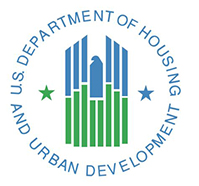Background & Authority: The U.S. Department of Housing and Urban Development (HUD) announced last week that it is issuing a final rule to formalize a national standard for determining when a housing practice violates the Fair Housing Act as a result of discriminatory effect. Title VIII of the Civil Rights Act of 1968, as amended (Fair Housing Act or FHA), prohibits the sale, rental, or financing of dwellings and in other housing-related activities on the basis of race, color, religion, sex, disability, familial status, or national origin. HUD is charged with the authority and responsibility for interpreting and enforcing the Fair Housing Act and the power to make rules impacting the Act.
Discriminatory Effect Interpretation: HUD has long interpreted the FHA to prohibit practices with an unjustified discriminatory effect, regardless of whether there was an intent to discriminate. HUD states that eleven courts of appeals have ruled on this issue and agree with this interpretation. While HUD and the federal appellate courts have determined that liability under the Act may be established through proof of discriminatory effects, the statute itself does not specify a standard for proving a discriminatory effects violation. Through the final rule, HUD formalizes its long-held interpretation of “discriminatory effects” liability under the FHA and, for purposes of providing consistency nationwide, formalizes a burden-shifting test for determining whether a given practice has an unjustified discriminatory effect, leading to liability under the Act.

Despite industry opposition, the Department of Housing and Urban Development issued a rule on February 8th that will formalize a “disparate impact” approach to fair lending enforcement in which statistical analysis can be used to determine whether a housing practice violates the Fair Housing Act. Disparate impact doctrine holds that lending practices may be considered discriminatory and illegal if they have a disproportionate “adverse impact” on members of a prohibited basis group. A facially neutral policy or practice is one that does not appear to be discriminatory on its face; rather it is one that is discriminatory in its application or effect. In other words, the disparate impact rule uses statistical analysis to determine if discriminatory behavior has taken place even if there is no intent to discriminate.
“HUD is maintaining well-established legal precedent and formalizing a nationally consistent, uniform burden shifting test for determining whether a given housing practice has an unjustified discriminatory effect,” said John Trasvina, HUD’s Assistant Secretary for Fair Housing and Equal Opportunity. HUD also stated that the rule will provide “greater clarity and predictability for all parties engaged in housing transactions as to how the discriminatory effects standard applies.”
According to HUD, the rule provides clarity and consistency for individuals, businesses, and government entities subject to the Fair Housing Act. HUD believes the new rule will make it easier for individuals and organizations covered by the law to understand their responsibilities and comply with the law.
In addition to clarifying the use of disparate impact, the new HUD rule established a three-part burden-shifting test for determining when a practice with discriminatory effect violates the Fair Housing Act.
- The charging party or plaintiff first bears the burden of proving its prima facie (first appearance) case that a practice results in, or would predictably result in, a discriminatory effect on the basis of a protected characteristic (e.g. race, gender, etc.).
- If the charging party plaintiff proves the prima facie case, the burden of proof shifts to the respondent or defendant to prove that the challenged practice is necessary to achieve one or more of its substantial, legitimate, nondiscriminatory interests.
- If the respondent or defendant satisfies this burden, then the charging party or plaintiff may still establish liability by proving that the substantial, legitimate, nondiscriminatory interest could be served by a practice that has a less discriminatory effect.
As previously stated, the new rule which was originally proposed in November 2011 has been met with industry opposition. In July, the ABA urged the regulators to stop using the “disparate impact” theory in its approach to fair lending supervision and enforcement claiming that it fails to actually find the intent to discriminate. "ABA members are strong advocates for fair lending and fully support enforcement against practices that intentionally discriminate," said Frank Keating, ABA president and CEO. "However, disparate impact asserts fair lending violations occurred based only on statistical differences, where neither intent nor discrimination can be proven."
Disparate impact has been used to build discriminatory lending cases in the past by the DOJ and other parties. For example, Bank of America settled its case for $335m in December of 2011 over discriminatory lending practices at Countrywide Financial. The HUD’s new rule formalizes the use of disparate impact as policy. More recent sample cases are highlighted below:
In Summary: Under disparate impact rules, a plaintiff can claim discrimination without proving intent or even the existence of the violation. Instead, statistical analysis is relied upon to reveal whether certain minority groups received the same treatment as others.
Next Steps: The best way to proactively manage a financial institution’s concern regarding disparate impact is to statistically analyze your data. Click here to get a free fair lending report to help you analyze your lending performance. If you are a HMDA filer, we will use your actual data to generate the analysis.
Read More: